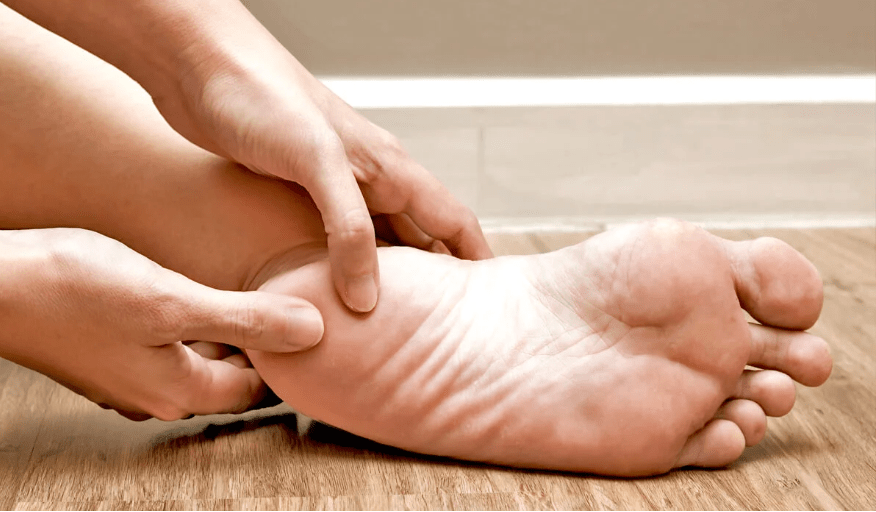Diabetes can cause a range of foot-related issues, from poor circulation to nerve damage, making proper footwear essential for overall foot health. Choosing the right diabetic shoes can help prevent complications, reduce discomfort, and promote mobility. In this guide, we’ll explore the key features of diabetic foot care shoes, the importance of foot care, and recommend some of the best options available.
Why Diabetic Foot Care Shoes Matter
For individuals with diabetes, foot care is crucial. Diabetes can lead to peripheral neuropathy (nerve damage), poor circulation, and an increased risk of infections. Minor cuts, blisters, or pressure points can quickly develop into ulcers or more serious complications if not addressed. Proper diabetic shoes can help protect against these issues by providing a pressure relief, comfortable, and supportive environment for your feet.
Common Foot Problems in Diabetics
-
Neuropathy: Reduced sensation in the feet, making it harder to detect injuries.
-
Peripheral Artery Disease (PAD): Restricted blood flow, leading to slower healing and increased infection risks.
-
Foot Ulcers: Open sores that develop due to pressure, friction, or injuries that go unnoticed.
-
Bunions & Hammertoes: Structural foot issues exacerbated by poor shoe fit.
-
Corns & Calluses: Thickened skin from friction and pressure.
Wearing the right diabetic shoes can help alleviate these concerns by reducing pressure points, enhancing support, and preventing foot injuries.
Key Features of Diabetic Shoes
When shopping for diabetic shoes, look for these essential features:
-
Extra Depth & Wide Toe Box: Prevents pressure on toes and accommodates swelling or orthotics.
-
Seamless Interior & Soft Linings: Reduces irritation and prevents friction that can lead to blisters.
-
Cushioned Insoles & Arch Support: Enhances comfort and prevents foot strain.
-
Breathable Materials: Helps keep feet dry and reduce the risk of infections.
-
Shock-Absorbing & Slip-Resistant Outsoles: Improves stability and reduces impact on joints.
-
Adjustable Closures: Velcro straps or elastic laces allow for an easy, customized fit.
-
Orthotic-Friendly Design: Many diabetic shoes come with removable insoles, allowing for custom orthotics.
Top Recommended Diabetic Foot Care Shoes
Casual & Everyday Shoes
1. FitVille EasyTop Wings Diabetic Shoes
These shoes provide extra width, adjustable Velcro straps for easy wear, cushioned support, and a seamless interior to reduce friction and irritation.
2. Orthofeet Stretchable Mary Jane Shoes
Designed with soft, stretchable uppers and a pressure relief fit, these shoes offer extra cushioning and excellent arch support.
Indoor & House Shoes
3. Propet Cush ‘N Foot Diabetic Slippers
Perfect for indoor and outdoor use, these soft and flexible shoes provide a roomy fit and a cushioned insole for optimal comfort.
Walking & Athletic Shoes
4. Dr. Comfort Carter Diabetic Sneakers
A stylish and supportive option with extra depth, removable insoles, and a slip-resistant sole for added safety.
5. New Balance 928v3 Walking Shoe
These motion-control walking shoes offer superior arch support, stability, and a seamless interior to protect sensitive feet.
Dress Shoes
6. Drew Tulip Women’s Dress Shoes
A fashionable yet functional option with extra depth, a soft padded collar, and a shock-absorbing outsole.
7. SAS Scenic Loafer
This classic loafer provides comfort, support, and a wide toe box, making it an ideal dress shoe for diabetics.
Tips for Choosing the Right Diabetic Shoes
-
Measure Your Feet Regularly: Foot size and shape can change over time, so ensure a proper fit.
-
Opt for Adjustable Closures: Velcro straps or elastic laces help accommodate foot swelling.
-
Break Them in Gradually: Wear new shoes for short periods at first to ensure they don’t cause irritation.
-
Look for Medicare or Insurance Coverage: Some diabetic shoes may be covered under health insurance plans.
-
Pair with Diabetic Socks: Moisture-wicking, seamless socks can further protect your feet.
Additional Foot Care Tips for Diabetics
Wearing the right shoes is just one aspect of diabetic foot care. Here are some additional tips to maintain healthy feet:
-
Inspect Your Feet Daily: Look for cuts, blisters, or swelling and address any issues immediately.
-
Keep Feet Clean & Moisturized: Wash daily with mild soap and warm water, and use a diabetic-safe moisturizer.
-
Trim Nails Carefully: Cut nails straight across to avoid ingrown toenails.
-
Avoid Walking Barefoot: Protect feet from injury by always wearing shoes, even indoors.
-
Stay Active & Manage Blood Sugar: Regular exercise and blood sugar control help improve circulation and overall foot health.
Conclusion
Diabetic foot care shoes are essential for preventing complications and ensuring comfort. Whether you need casual, athletic, or dress shoes, choosing the right pair with proper support and cushioning can make all the difference. Prioritize fit, breathability, and seamless construction to keep your feet healthy and pain relief. By combining the right footwear with good foot care habits, you can significantly reduce the risk of foot problems and enjoy an active lifestyle with confidence.













